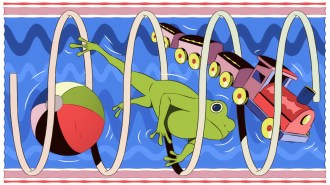A promising material for conducting electrical current without resistance at a relatively high temperature has passed a crucial test. New magnetic measurements, detailed by German physicists in a study posted online June 26 at arXiv.org, indicate that pressurized hydrogen sulfide is a superconductor at roughly 200 kelvins.
The fresh data bolster the controversial claim of hydrogen sulfide superconductivity made by the same researchers in December (SN: 4/4/15, p. 11). If confirmed, the discovery would nudge physicists closer to their ultimate goal of room-temperature superconductivity (about 300 kelvins). No other known material is superconducting above 164 kelvins.
Mikhail Eremets, a high-pressure physicist at the Max Planck Institute for Chemistry in Mainz, Germany, and colleagues crushed hydrogen sulfide samples between small diamonds at more than 1.5 million times standard atmospheric pressure. The researchers report that at temperatures as high as 203 kelvins, the samples expelled magnetic fields, exhibiting what’s known as the Meissner effect. This magnetic evidence is a stronger indicator of superconductivity than the electrical resistance measurements Eremets’ team originally used to make the case, says Russell Hemley, a materials chemist at the Carnegie Institution for Science in Washington, D.C.
Ivan Božović, a condensed matter physicist at Brookhaven National Laboratory in Upton, N.Y., wants to see a separate group of physicists replicate the finding. “I think it is still too early to uncork the champagne,” he says. Confirmation could take time because there aren’t many labs that can perform precision measurements at such high pressures.
Hemley, whose lab is working on related experiments, says the German team’s research has sparked physicists to explore the superconducting prospects of other simple hydrogen-containing compounds. Understanding the structure of these compounds under pressure could enable physicists to devise materials that seamlessly shuttle electrons at more reasonable pressures and temperatures, he says.






